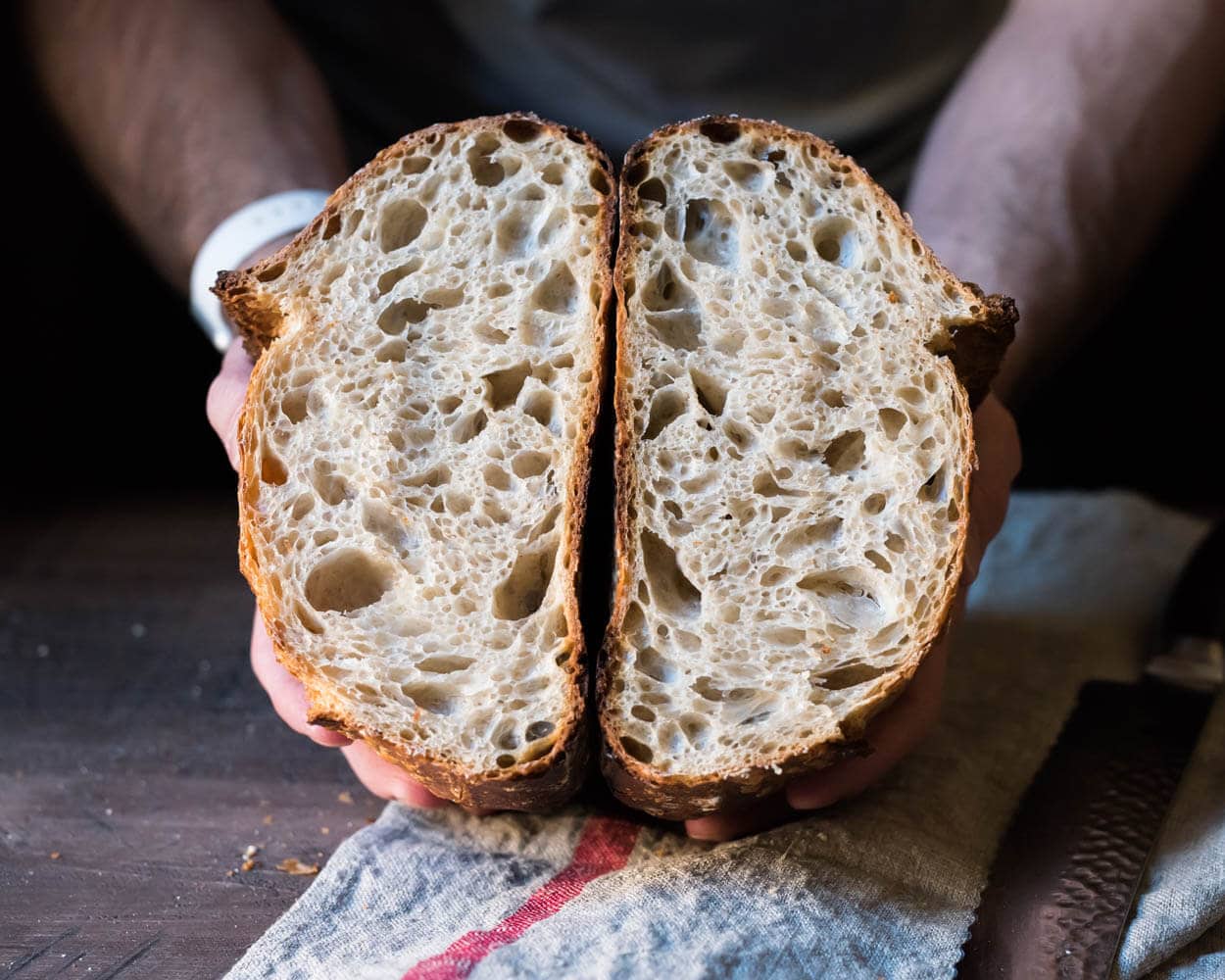Sourdough Bread: Tips for Perfect Texture and Flavor
Sourdough bread is a type of bread made through a natural fermentation process using wild yeast and lactic acid bacteria. Unlike bread made with commercial yeast, sourdough’s fermentation gives it distinct flavors and a unique, tangy taste. The fermentation time, which can vary based on temperature, humidity, and ingredients, contributes to the bread’s texture and complexity.
The Basic Ingredients of Sourdough
To make sourdough bread, you’ll need just three primary ingredients:
- Flour: Choose high-quality, preferably organic, all-purpose flour or bread flour. Whole wheat and rye flours add additional flavors and nutrients.
- Water: Use filtered or bottled water to avoid chlorine, which can inhibit yeast activity.
- Salt: Fine sea salt or kosher salt helps enhance the bread’s flavor.
These ingredients, combined with a sourdough starter, create the basis for your loaf. The starter itself consists of flour and water that ferment to cultivate the wild yeast and bacteria necessary for leavening.
The Process of Making Plain And Simple Sourdough Bread
Creating the Starter
Creating a sourdough starter involves mixing flour and water, allowing wild yeast and bacteria to grow. Combine 100 grams of flour and 100 grams of water in a container. Stir thoroughly, cover loosely, and let it sit at room temperature. Feed your starter daily with equal parts flour and water, discarding half of the mixture each day. In 5-7 days, the starter should become bubbly and develop a tangy aroma, indicating it’s ready for baking.
The Importance of Fermentation
Fermentation transforms simple ingredients into a complex-tasting sourdough loaf. Mix the starter with flour, water, and salt to form dough, then allow it to ferment. Leave the dough to rise in a bowl covered with a towel for about 4-24 hours, depending on room temperature. Fermentation time affects flavor; longer periods develop more tang. Fold the dough several times during fermentation to build gluten structure.
Shaping and Baking
Shape the fermented dough into a round or oval loaf. Place it in a proofing basket or bowl lined with a floured towel. Let it rest for 1-2 hours for the final rise. Preheat the oven to 450°F with a Dutch oven inside. Transfer the dough to the hot Dutch oven, score the top, and cover. Bake for 20 minutes with the lid on, then remove the lid and bake for another 20-25 minutes. The bread is ready when it has a deep golden-brown crust.
Health Benefits of Sourdough Bread
Nutritional Components
Sourdough bread offers a range of nutritional benefits. It’s rich in vitamins and minerals, including B vitamins like folate and thiamine, and essential minerals like iron and magnesium. Compared to conventional breads, sourdough contains higher levels of antioxidants. These components result from the fermentation process, which breaks down phytates and makes nutrients more bioavailable. Lower glycemic index values in sourdough help control blood sugar levels more effectively than other bread types.
Digestive Advantages
Sourdough bread enhances digestive health through its unique fermentation process. The lactic acid bacteria pre-digest the starches, making the bread easier to digest for many people. This process also reduces gluten content, which may benefit those with mild gluten sensitivities. The natural probiotics in sourdough support a healthy gut microbiome by promoting beneficial bacteria. Fewer digestive issues, like bloating and indigestion, are common when consuming sourdough instead of commercial yeast bread.
Tips and Tricks for Perfect Sourdough Bread
Maintaining Your Sourdough Starter
Consistency boosts the health of your sourdough starter. Feed it daily with flour and water, keeping a 1:1:1 ratio (starter:flour:water) at room temperature for the best results. To achieve proper fermentation, store the starter in a warm spot between 70-75°F (21-24°C).
Inspect your starter’s activity levels. If bubbles form and the mixture doubles in size within 4-6 hours, it’s active. Should the aroma be off or mold appear, discard it. A healthy starter has a tangy, clean smell.
Adjust hydration based on your local climate. In humid areas, reduce water slightly. In dry climates, add a bit more. Always use filtered or bottled water to avoid chlorinated water, which can harm the wild yeast and bacteria.
Common Mistakes to Avoid
Overfermentation affects dough quality. Fermentation over 12 hours leads to sour flavors and weak structure. Watch your dough’s rise and structure instead of strictly following the clock.
Avoid underproofing, as it leads to dense bread. Perform the poke test: gently poke the dough; if it springs back slowly, it’s ready.
Neglecting starter health reduces loaf quality. Feed it regularly, even if stored in the fridge. Use the starter weekly, or feed it before using it in a recipe, ensuring it’s active and bubbly.
Incorrect baking temperatures harm the bread’s texture. Preheat your oven to 475°F (245°C) and use a preheated Dutch oven for the first 20 minutes. Then, reduce to 450°F (232°C) to complete the bake. Accurate temperatures create a well-cooked crust and soft crumb.
By focusing on these aspects, you optimize your sourdough bread and maintain the quality, flavor, and overall texture.
Conclusion
Mastering plain and simple sourdough bread is a rewarding journey that combines science and art. By understanding the intricacies of natural fermentation and maintaining a healthy starter, you can achieve exceptional flavor and texture. Paying attention to fermentation conditions and avoiding common pitfalls will elevate your baking skills. With patience and practice, you’ll create sourdough bread that’s both delicious and nutritious. Happy baking!






